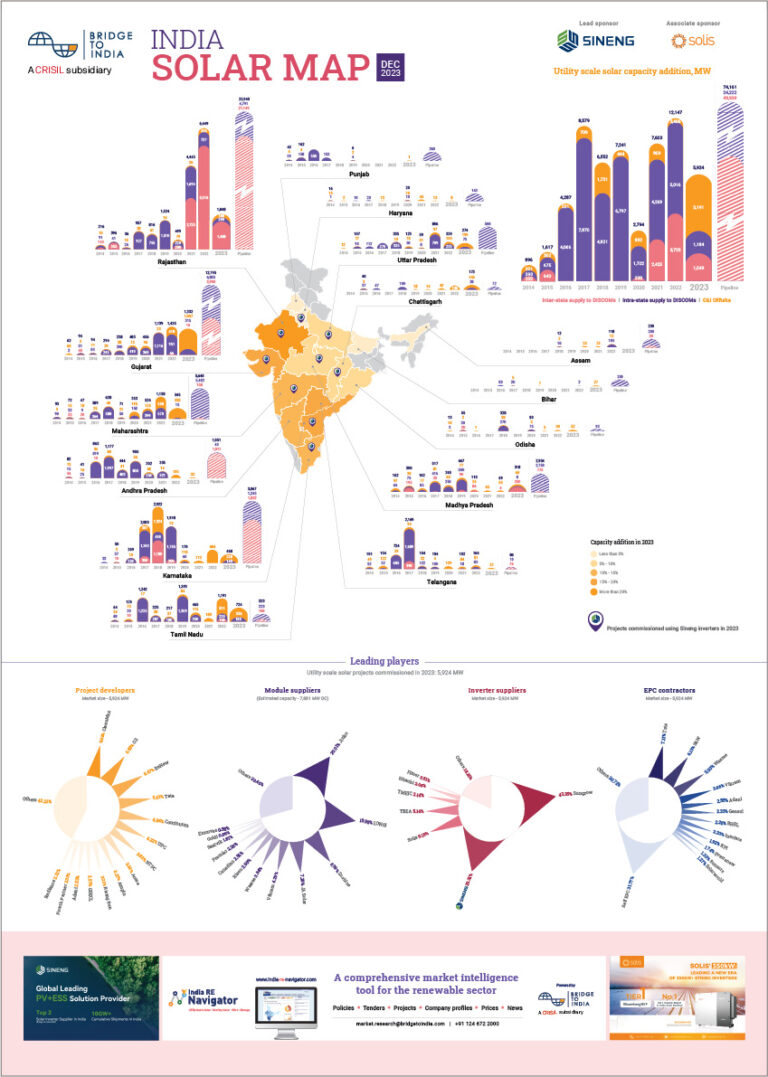It is early March and peak power demand this month has already hit 195 GW as against 186 GW last year. Peak demand over last five years has grown at a CAGR of 4.6% outpacing total power demand CAGR of 3.4%.
Figure 1: Peak and total power demand

Source: CEA, BRIDGE TO INDIA research
These are official peak demand numbers reported by CEA, which also reports a rising peak deficit of 2.9 GW in the current financial year as against a deficit of about 1.4 GW in the last 3-4 years. Actual peak deficit is almost certainly much higher as DISCOMs routinely resort to load-shedding in response to rising demand. Increasing peak demand has led to greater volatility in hourly prices in the day-ahead-market on the exchanges. Morning and evening peak power prices are now routinely hitting and crossing INR 8/ kWh as shown in the following chart. Indeed, the day-ahead prices touched a new high of INR 20/ kWh on 4 March 2022.
Figure 2: Average hourly prices in the day-ahead market, INR/ kWh

Source: Indian Energy Exchange, BRIDGE TO INDIA research
There has been a similar increase in round-the-clock (RTC) prices on the exchanges over last 5 years. RTC prices in first week of March 2022 touched INR 5.41/ kWh against INR 4.07 and 2.46 seen one and two years earlier respectively.
There are several factors explaining demand-supply imbalance and price spikes. Growth of renewable capacity, concomitant with the sharp slowdown in thermal capacity addition over the last few years, is the biggest factor at play. Surplus power available for sale on the exchanges has almost completely dried up. Imported coal prices have shot up to over USD 100/ ton, an increase of over 2x in the last year, rendering affected plants unviable. And domestic coal production capacity does not seem fully geared up yet to cater to 100% demand.
The deficit is expected to get worse in the next few months as we hit peak summer. And prognosis for the next few years does not look good. A simple extrapolation of demand-supply suggests that peak deficit could reach 30-40 GW levels in the next five years. Expected renewable power capacity addition of around 60 GW, almost all without any storage capacity in the same period, would exacerbate peak power deficit and price volatility.
There are already some calls for developing new thermal power projects to ease supply pressure. The government would do well to resist such pressure and examine alternate remedial measures like incentivising addition of storage capacity, demand side management and move to market based pricing of power. Meanwhile, soaring peak power prices should provide sufficient financial reasons to DISCOMs to overcome their financial concerns and commit to RTC renewable power. It is worth noting that SECI’s first peak power tender (1,200 MW solar-wind-storage hybrid capacity, peak power price of INR 6.12-6.85/ kWh) is still not fully contracted, more than 2 years after the auction date.












